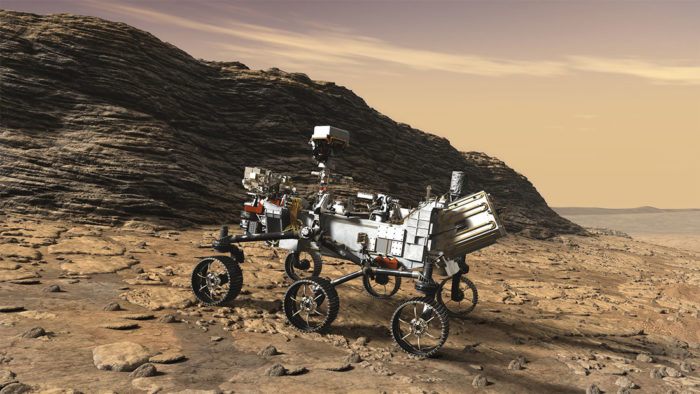Feb 18 2021
Perseverance Set to Land on Mars
 The landing is the tricky part.
The landing is the tricky part.
Mars is a difficult planet to land on. It has just enough of an atmosphere to be a problem, about 1% the pressure of Earth’s atmosphere. This is thin so provides much less breaking (but still useful) to slow the craft, but thick enough to produce dust storms and other menaces. Mars has 0.376 G surface gravity, which is a lot less than Earth but significantly more than the Moon. It is enough to make landing a challenge.
The Mars Perseverance Rover is set to land on Mars at 4pm Eastern time today (2/18/2021). This is perhaps the trickiest Mars probe landing yet, specifically because we are aiming for difficult terrain. Previous landers and rovers went for safe landing sites, rather than scientifically most interesting sites. Perseverance will have instruments to look for signs of ancient life, and so has to go where the looking is good, not necessarily where the landing is safe.
The landing procedure has been characterized by NASA as seven minutes of terror. The communication delay to Mars at this time will be 11 minutes, so it will all be over before we seen what happened. The landing procedure starts with the lander breaking away from the spacecraft. The lander has a heat shield which will slow the craft as it screams through the thin Martian atmosphere. Once the craft is slowed enough, it will deploy a parachute to further slow it down.
Once slowed enough by the parachute, it will drop its heat shield, which is no longer necessary. This will allow cameras to see the ground and actually choose a landing spot. The final landing stage will then break from the parachute and use rockets for the final descent. The rockets are actually part of a crane platform that is holding Perseverance. Once it is hovering over the landing site, it will lower the rover on cables and release it onto the ground, then fly away to a safe distance to land itself.
The entire procedure is fairly complex, has to happen fully automated, and if anything goes wrong can result in catastrophic failure. Out of 45 Mars missions, (all countries) 22 have been complete failures, and two partial failures. Success rate has improved over time, however. But still, Mars has proven challenging.
Given NASA’s recent successes, however, I am fairly confident this will all work out. Still, there is no guarantee.
Perseverance is a rover, which means it can move around after it lands. It will be landing near Jezero crater, which shows signs of ancient water. This is a good place, therefore, to look for signs of ancient life. While the rover looks a lot like previous rovers, such as Curiosity, it is bigger and has upgraded instruments.
Specifically, Perseverence has ground penetrating radar, it has a bigger drill for taking ground samples, and is has higher resolution cameras. It also has microphones so that we can hear what it sounds like on Mars for the first time (which is amazing that we have not done this before, but I know space and weight are a premium on probes). It has “An X-ray fluorescence spectrometer with high-resolution camera to determine the fine scale elemental composition of Martian surface materials.”
Another instrument will be able to measure features of Marian weather. One critical and new instrument will detect for organic compounds, critical for investigating the possibility of life on Mars. Another instrument will determine the feasibility of producing oxygen from CO2 in the Martian atmosphere – testing the future habitability of Mars.
The rover also contains a smaller probe, the Ingenuity. This is a small helicopter drone, which is designed for the Martian environment (gravity and atmosphere). The blades have to move five times faster than a comparable drone on Earth. The point is simply to test the technology itself – can the thing fly on Mars? If successful, Ingenuity will be the first thing to fly on Mars. This will also pave the wave for future Martian drones, which could be extremely useful in exploring and mapping Mars.
Hopefully all will go well later today when the Perseverance sets down on Mars and we can begin the next phase of our exploration of the Red Planet. This rover explicitly is designed to look for signs of ancient life, and to gather the information we need for a future human presence on Mars. So the rover also marks a new direction for our exploration of Mars.






